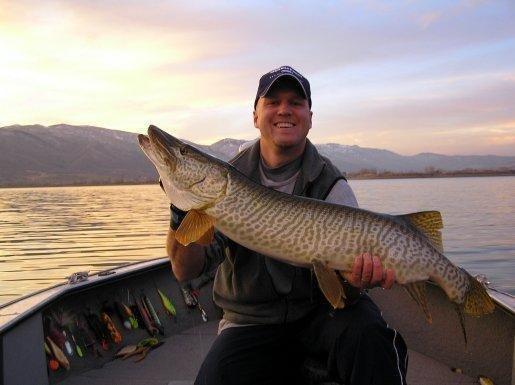More than 1,100 anglers took an online Utah fishing survey in May and June. The responses they provided were heard loud and clear by Division of Wildlife Resources biologists.
Drew Cushing, sport fisheries coordinator for the DWR, says he’s excited so many anglers responded to the survey. “The anglers who responded shared some great ideas with us,” he says. “In fact, their ideas were so good that we’ll probably recommend several of them for Utah’s 2012 season.”
Survey results
The survey gave anglers a chance to answer several multiple choice questions. At the end of the survey, they could share with the DWR any fishing idea they wanted to share.
After completing the multiple choice part of the survey, 95 percent of the more than 1,100 anglers who took the survey also took the time needed to share their ideas.
Cushing says about 80 percent of the ideas the DWR received can be placed into four general categories. He says most of the anglers who shared their ideas want:
- More chances to catch big fish.
The anglers said they’d be willing to accept stricter regulations if the regulations gave them a better chance to land some “lunkers.”
- More fishing waters in cities and towns across Utah.
Called community waters, these waters provide great, close-to-home fishing for anglers of all ages.
- Regulation changes at certain waters.
Willard Bay Reservoir, Lost Creek Reservoir and Panguitch Lake were three waters that topped the list.
- More enforcement of fishing regulations at waters across Utah.
В
Changes at specific waters
Based on what anglers told them in the survey, Cushing says DWR biologists are considering several changes at specific waters in Utah. The following are some examples:
Willard Bay Reservoir
- Reduce the wiper limit to three wipers a day. (Currently, anglers at Willard Bay can keep up to six wipers a day.)
Cushing says DWR personnel at the Wahweap State Fish Hatchery are getting better and better at raising wipers.В (Wipers are a cross between a female striped bass and a male white bass.)
But the hatchery still hasn’t reached the point where it can keep up with the demand for wipers at Willard Bay Reservoir (a popular wiper fishing water north of Ogden) and other waters in Utah that have wipers. Until the hatchery can meet the demand, many anglers would like to see the wiper limit at Willard Bay reduced to protect the wipers that are in the reservoir now.
“We agree with the anglers,” Cushing says. “We think reducing the wiper limit at Willard Bay is a great idea.“
Lost Creek Reservoir
- Allow anglers to keep up to four trout a day. But not more than three of those trout could be less than 15 inches long. And not more than one of the trout could be longer than 22 inches.
- All trout between 15 and 22 inches would have to be released immediately. (Currently, anglers can keep up to four trout a day at Lost Creek, no matter how long the trout are.)
Cushing says Utah chubs are causing problems at this reservoir northeast of Croydon in northern Utah. To help fight the problem, anglers would like to see some “chub eaters” placed in the reservoir. DWR biologists think that’s a good idea.
Cushing says the DWR will probably place Bear Lake cutthroat trout — the same species that’s controlling chubs at Strawberry Reservoir — into Lost Creek.
The new trout limit — which is similar to the trout limit that’s worked so well at Strawberry — would keep plenty of cutthroats in the reservoir to fight the chub population. But the new limit would do even more.
Because the new limit would protect all of the trout species in Lost Creek — tiger, rainbow and cutthroat — big trout would be available for anglers to catch in the future.
Big fish at a small water?
Place the usual community water limit — two fish a day of any species — on seven of the eight new community waters that will open in Utah in 2012.
But at one of those waters — Hobbs Reservoir in Layton — special rules would be in place:
- Anglers could keep up to two trout each day, but the trout would have to be 15 inches or shorter. All trout longer than 15 inches would have to be released immediately.
- Bait would not be allowed. Anglers would have to use lures or flies. Using lures and flies increases the chance that fish will survive after being released.
Cushing says the rules at Hobbs should allow trout in the reservoir to grow to a larger size while allowing anglers to keep some of the smaller fish.
Many of those who responded to the survey said they wanted more chances to catch bigger fish. “To help meet that demand,” Cushing says, “we’d like to try something different at Hobbs.
“If the regulations worked,” he says, “in the future, anglers could do something that’s rare in Utah or any state — catch a trophy-sized fish in the middle of a large community.”
Five-year survey to start soon
While biologists were happy with the number of responses they received, the DWR’s online survey didn’t receive enough responses to accurately represent all of the anglers in Utah.
But a survey Utah State University will conduct for the DWR this fall will.В USU conducts this fishing survey every five years.
“If you receive a call from USU,” Cushing says, “please participate in the survey. We’re listening. We need your input. We want your ideas.”


